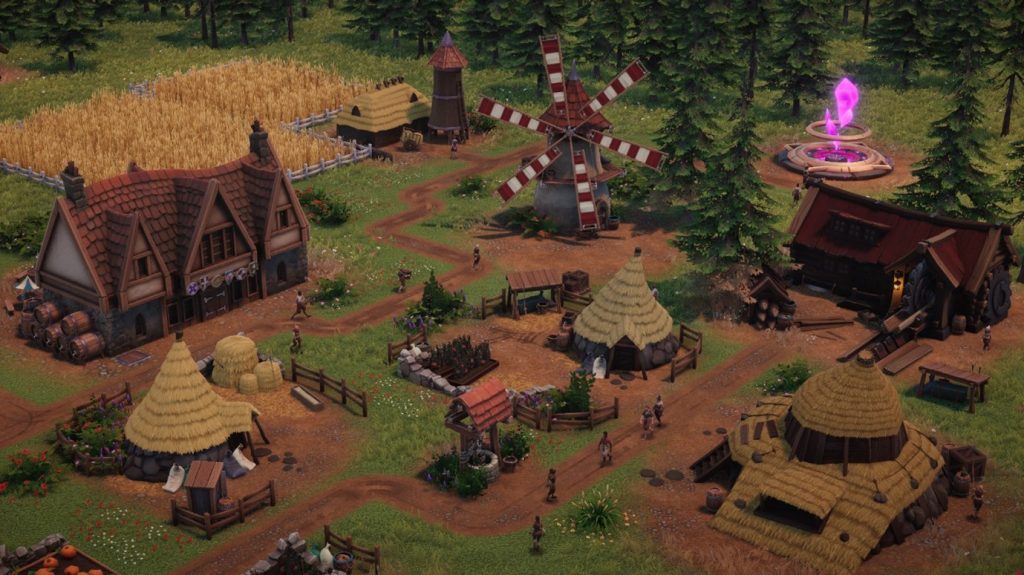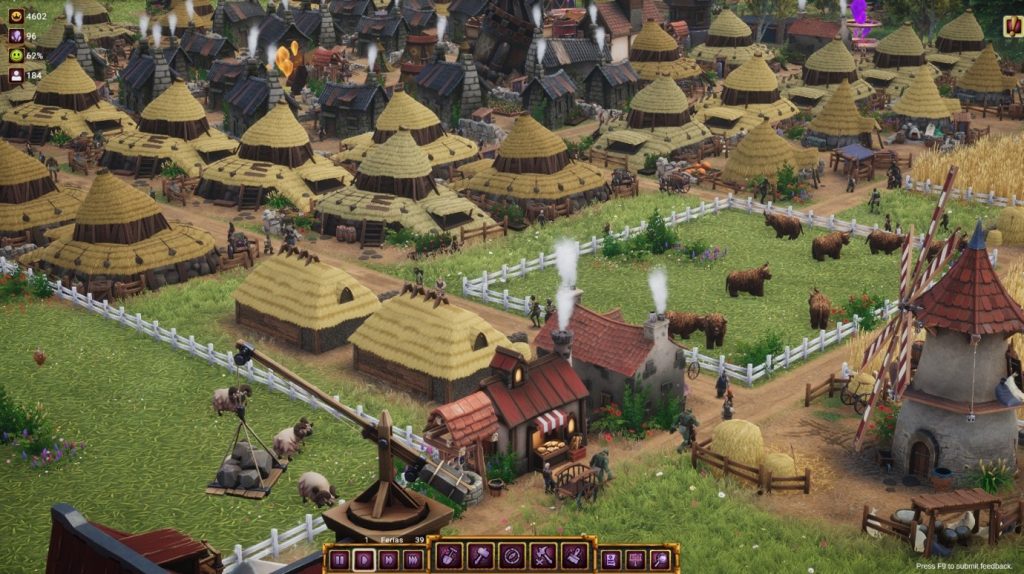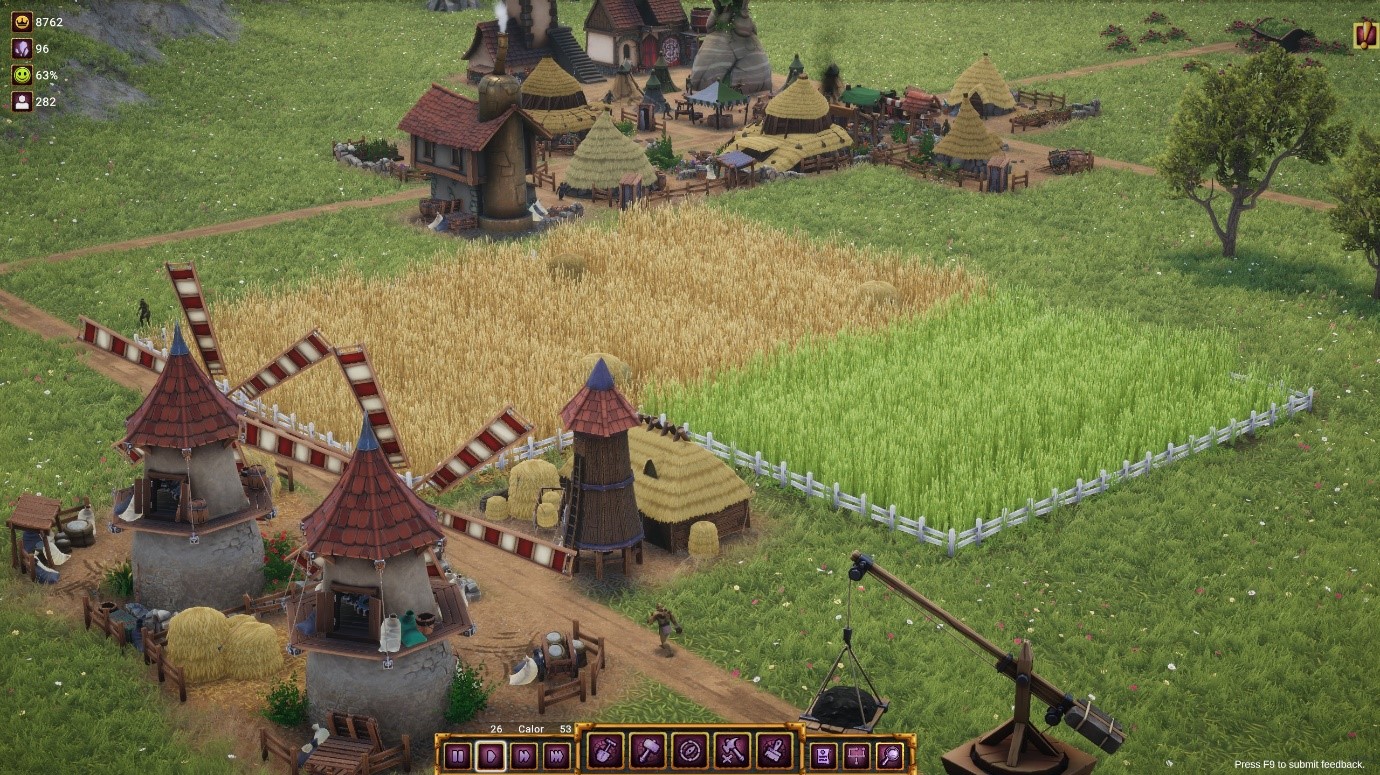Distant Kingdoms is a small-scale city building game in a fantasy setting, which has recently released as an early access game from developer Orthrus Studios and publisher Kasedo Games. As of now there are two maps to choose from with four races available in free-play, with more maps and a campaign mode to follow later.
The core gameplay is much the same as in many other settlement-builders; expanding your town with more industry, then more housing to provide workers and more farms to feed those workers. Workers are divided into tiers with only peasants available at the start with citizens, artisans and nobles being added to the mix as you progress. Each tier has different needs in terms of foods and luxury goods to ensure their happiness and, more importantly, their productivity stays high.
Buildings and roads are placed on a grid, with farms being placed by dropping down a building and then a number of small field sections around it, which interconnect if placed adjacent to each other. Meeting the basic needs of peasants is pretty easy, all you need is a well and a gatherer to pick berries, which is placed as a building with a radius for berry collection. There’s even an option to spend gold to grow more berries, which can later be automated.
The luxury good for peasants is bread which requires a corn field, windmill and bakery as one would expect. The basic and luxury goods for higher tiers of settler then follow this pattern with more production chains to produce meat, cheese and the like. This system of having specific foodstuffs for different tiers does feel a little odd thematically – nobles obviously cannot sully themselves by eating such base foodstuffs as berries – but it does encourage maintaining a full range of production chains.

Most of the other buildings exist to provide building materials to continue your expansion, similarly requiring more materials and processing to access higher-tier buildings. All of this is pretty standard fare for this type of game, but one less usual inclusion are the magical buildings. At the moment at least this is fairly limited, consisting of mana wells to produce your magical resource, totems which consume mana to provide a specific buff in a radius, and portals to provide a faster alternative to taking a road. The totem buff effect can be adjusted in strength to also adjust mana consumption so it’s pretty easy to balance the books, which is good as you can’t stockpile mana in any meaningful way. These options give you some room to optimize and specialise areas, as well as reinforcing the fantasy theme.
A big part of that theme as presented in the introductory cutscene is the interaction between the four races: humans, dwarves, elves and orcs. In the game this translates to choosing an initial race and then happening on the others as you expand and integrating them into your population. The different races provide different bonuses when working in various buildings which match up to their lore, so the druidic orcs provide bonuses to farming/working with plants, dwarves are better engineers and so on.
That sounds great on paper, but in practice most buildings have a bonus only for one specific race, so you are always just going to want your dwarven engineers and anything else is sub-optimal. One notable exception is the warehouse, which gives different bonuses for every race yielding an interesting choice, it would be good to see that expand to more of the buildings as the early access progresses.

Distant Kingdoms looks lovely, with a cute stylised graphical design; including fire service yaks, delightful little gardens in low density housing and plenty of placeable decorative buildings to make your settlement that bit prettier. One big missed opportunity though ties back to the multi-species theme of the game. The only buildings which reflect the race that built it are the town centres, which have very distinct styles. Once you start putting down other buildings though that goes away with every race having the same houses, farms and all the rest. Hopefully this will change as the early access progresses, even if only with small additional elements being added to standard buildings to reflect the occupants.
Another area which could also certainly use some work is the adventure and trade layer. Once you get a tavern built you can recruit adventurers you can send out to explore the map and expand your buildable area. While doing this they can run into enemies and dungeons, dealing with them in a simple text adventure style minigame. This minigame works but isn’t particularly well explained or integrated into the rest of the game. It seems that the developers are aware of this as a full rework of the system is in the development roadmap. Trade is the other half of the exploration layer, allowing you to move resources between warehouses so you can bring raw materials into the main town from mining outposts or remote farms. Unfortunately, the interface for doing this is extremely clunky in the current version which makes expansion past a point where you can manage the settlement from a central warehouse somewhat painful.
As it stands, Distant Kingdoms is a competently made base from which to expand, with a strong core to the city building economy but still with plenty of room to expand and improve. I look forward to seeing how the game evolves as time goes by. Distant Kingdoms is available now on Steam for £21.69 or regional equivalent.
(Editor’s Note: Distant Kingdoms was provided to us by the publisher for the preview.)

